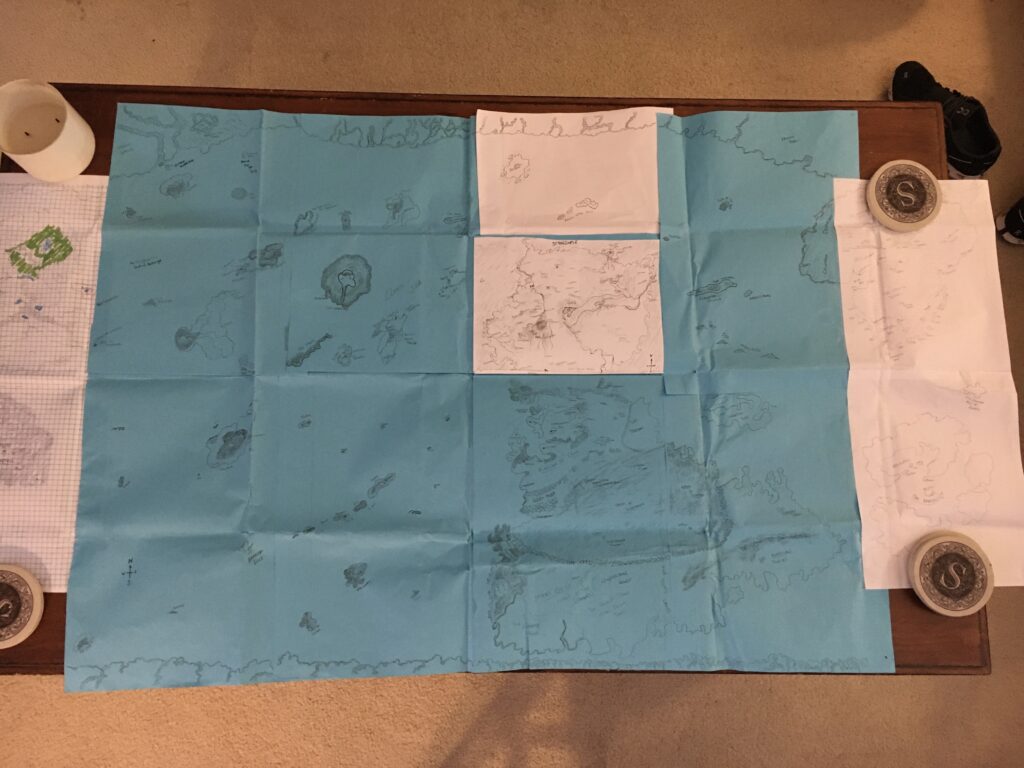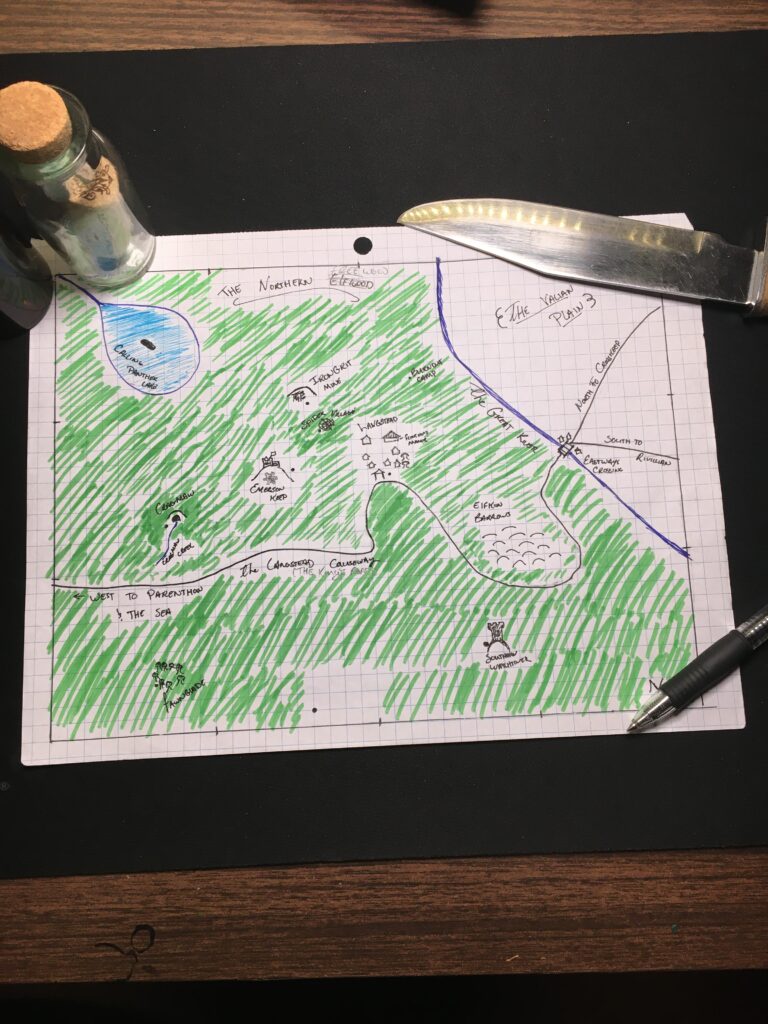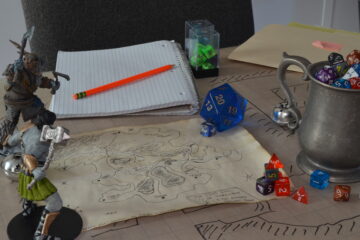What now?
That’s the question we all have when we set out to start running the game. Perhaps you have a map or an idea or even an adventure planned. That’s great! Use what you have at your disposal. When it comes to starting from scratch, however, we sometimes put the cart before the man who sold us the horse.
A small disclaimer here, when I first set out to run D&D for my friends I began by making a map (and not just any map, a big map). I also don’t think that was a terrible idea at all! If you start with a basic blob on a piece of graph paper, that can lend you a creative hand when trying to decide where your party is going next (or where to put that dragon king and the land he terrorizes). This isn’t for everyone, though.
Some people hate drawing or maps in general.
To which I say shame on you for hating maps!
Not really, it’s ok to not like having a glorious, wall-filling display of your world that your wife questions you on every time you unfold it to stare at its gloriousness. That’s perfectly fine.

Instead, start with what you know want in the game. Do you want a story where the party fights against an evil cult of lobster-worshippers? Well, then you need a crustacean-esque demon creature and the name (NAMES) of a rather charismatic cult leader. Delve into what you know you want in your game and start with that. Once you have the theme of the game you can move on to something that will help you focus your time and attention.
Disclaimer #2: I received this advice from a great DM and writer named Matthew Colville. You should look him up, he’s on Youtube and has far nicer hair than I do. I’ll leave some links to his content below and you can see just how much I stole from him when crafting this article.
Start small.
There is a genre of TTRPGs called the hex-crawl. In this format, an adventuring group goes from one ten-mile or so hex to another; adventuring, pillaging, and plundering their measly black guts out. Usually each hex has a few different items of note that cause intrigue. When starting small, we eliminate the other hundred plus hexes you might find in a world or continent-sized map and focus on that ten or twenty square miles directly surrounding your main theme for the first adventure. Doing this keeps us from roaming off and trying to write the backstory for the lost continent of Glormau when we need to come up with the reason all of Farmer Titus’ livestock keep dying.
Start with the main town/quest hook area. I’ve included a link to Matt Colville’s starting town generation video to help out with this. You’d be surprised how many different noodly little jobs or shops you can come up within a town (as the DM, you can literally make everything from the pie stall on the corner to the maker’s mark on the nails that hold it together).
Next, move out to the quest hooks in the surrounding area. Our lobster cult needs a base of operations. Luckily, a few miles down the coast there’s rumored to be a sea cave next to an old dock. It’s said that the first settlers of this area found treasure within, but started killing each other off to keep it hidden. There’s a mine to the north of town that old prospectors say used to be filled to the gills with gold, but the bottom layers flooded when the pumps rotted, and no one’s had the means to get it back open again. And don’t forget the raiders somewhere in the eastern woods. They’ve been attacking our caravans for years, but they’ve gotten bolder as of late. If someone could track them down and root them out, we’d be much obliged.

Start with the quest items you want to follow (or just make up some logical conclusions based off of your actual quest) and go to town, or out of it.
Know that your group is probably never going to find all of the little pieces you’ve made for them. 100% completing a video game is fun for some people, but grinding in D&D is not. Don’t throw out your work, though. Just file it away for the next time you need a raider camp or a sea cave.
Once you have your main theme, your starting town, and your surrounding area, you are ready for hours upon hours of adventure. If you’re making a campaign from levels one to five, a ten or even twenty square mile area can be perfect. Just look at the starter set for 5e D&D. All but a small amount of that story takes place within Phandalin and the surrounding area.
So get busy. Take a look at your fantasy country and pick out a dot on the map that you want to start a campaign in. Take out a piece of paper and put that town in the center of it and start filling in. Seriously. Even if you don’t ever use that town in the future, you can make up a cool plot line that you’ll have in your back pocket.
Just a reminder, we are constantly looking for ideas to discuss in this series. If you would like to submit articles or would like to send in ideas for us to write about, leave a comment below or message our facebook page.
Until next time, keep on rolling!
-Dalton
Extra Credit:
Matt Colville’s the local area – https://www.youtube.com/watch?v=2BqKCiJTWC0
Matt Colville’s Your First town – https://www.youtube.com/watch?v=9capmKmysAE&t=430s
Matt Colville’s Your Town – https://www.youtube.com/watch?v=nTbD1GJUFC0
Seriously, just check out Matt Colville’s Channel.
Runesmith’s Towns, Cities, and Villages – https://www.youtube.com/watch?v=ZxMvJV9lG3k
